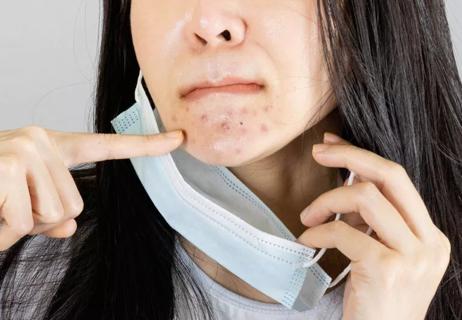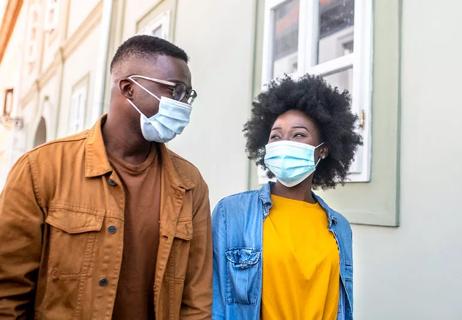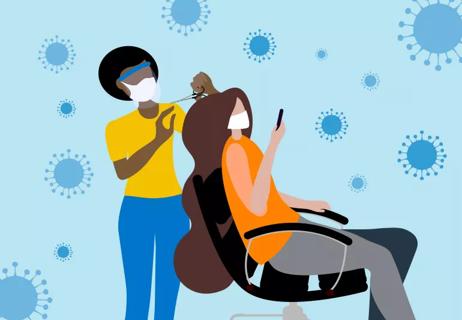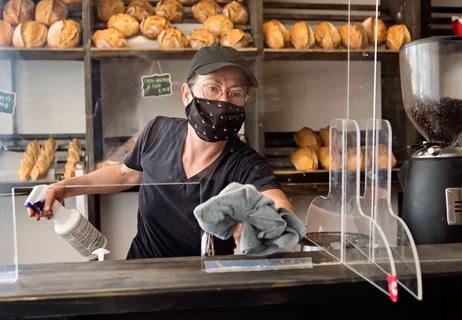Best practices for this essential piece of personal protective equipment

While face shields are new to many of us, healthcare professionals know them quite well. In medical settings, they’re worn when the chances of bodily fluids or hazardous substances getting into the eyes, nose and mouth are pretty high. But in recent months, you’ve probably seen other essential workers and even loved ones wearing face shields.
Advertisement
Cleveland Clinic is a non-profit academic medical center. Advertising on our site helps support our mission. We do not endorse non-Cleveland Clinic products or services. Policy
“Face shields offer healthcare providers another layer of protection,” says Steven Gordon, MD, Chairman of the Department of Infectious Disease. “They’re already a necessity for surgeons. And now with COVID-19, you’ll see providers who are testing or even intubating patients wearing them along with their masks for additional protection from transmission.”
Face shields are fairly easy to wear. They’re made up of a plastic or Plexiglas panel that curves around the face and an elastic band or adjustable strap that holds the panel in place. To ensure that you’re well protected while wearing one, the panel of your face shield should extend well past the chin and curve around the sides of your face. There also shouldn’t be any gaps between your forehead and the shield’s headpiece.
Outside of healthcare settings, the CDC does not recommend that face shields be worn during daily activities. Face shields also shouldn’t be considered as alternatives to masks.
The CDC recommends wearing disposable face shields once. You can use a non-disposable face shield repeatedly as long as it’s not warped, damaged or cracked. If your face shield becomes damaged, don’t try to fix it. Pitch it and get a new one. Face shields are reasonably priced and easy to replace. You can even buy disposable ones in bulk.
If you decide to purchase a face shield for personal use, wear it with a face mask to reduce your risk of exposure to COVID-19. You’ll also want to clean it after every use.
Advertisement
To do this, submerge the protective panel in warm, soapy water first to get any surface contaminants off and then gently clean the surface with a soft sponge or cloth. After that, rinse and gently dry your face shield with a soft towel (cotton or microfiber). You can clean the headpiece separately.
It’s possible to clean a face shield with antibacterial wipes, but be careful because they can leave a residue. You can also sanitize your face shield with 70% isopropyl alcohol wipes. If you’re tempted to use a window or household cleaner on your face shield, don’t. Harsh cleaners could potentially damage it.
The CDC recommends the following steps in the event that the manufacturer’s instructions for cleaning and disinfecting face shields aren’t available:
Your workplace should have a protocol for cleaning or replacing face shields. If you’re not sure how to handle either, check with your supervisor to find out exactly what you need to do.
Advertisement
Learn more about our editorial process.
Advertisement

No, but find out how you could be making things more uncomfortable

Here's what you can do to help prevent it

The short answer from an infectious disease specialist

Reduce the stress with a few helpful tips from a psychiatrist

Our expert weighs in on the new data

How to choose your mask wisely + keep it clean

The short answer from a hospital medicine specialist

The short answer from a hospital medicine specialist

If you’re feeling short of breath, sleep can be tough — propping yourself up or sleeping on your side may help

If you fear the unknown or find yourself needing reassurance often, you may identify with this attachment style

If you’re looking to boost your gut health, it’s better to get fiber from whole foods